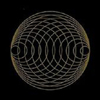 After several years of relying on a computer as his primary compositional tool, Gregg Kowalsky took a page from the mischievous intellectuals of the Oulipo and embraced voluntary artistic constraint as a means of liberating himself from the oft-crippling burden of unlimited possibility. Tape Chants is the result.
After several years of relying on a computer as his primary compositional tool, Gregg Kowalsky took a page from the mischievous intellectuals of the Oulipo and embraced voluntary artistic constraint as a means of liberating himself from the oft-crippling burden of unlimited possibility. Tape Chants is the result.
This release, Kowalsky’s second for Kranky, is actually the third release in the Tape Chants series. However, the other two were released on smaller labels and are long out of print, so this will be most people’s first exposure to Gregg’s ingenious and inspired analog vision. The premise is quite simple: Tape Chants uses tape loops as the primary source of material. When performing live, Kowalsky sets up a number of cassette players around the room (all tuned to one another and playing separate loops), then manipulates their volume to create a shifting psychoacoustic installation that each audience member hears slightly differently.
The first real track on the album, “I-IV,” begins with a two wavering drones (one high and one low) that are gradually enhanced by other swelling tones, a distant melodic shimmer, and some sort of weird crackling or scraping. It hypnotically ebbs and flows in this vein for about 20 minutes, although some heartbeat-like percussion drifts in for while. It is extremely difficult to tell which instruments most of the sounds originate from, as all of the loops blend together into a formless, quavering soup. Each piece is constructed with tuned sine waves as the foundation and they are generally the most conspicuous element. Kowalsky also employs gongs, percussion, a shruti box, feedback, and some field recordings, but they are generally used both sparingly and subtly.
All of the pieces on Tape Chants are very similar in tone. Or rather, the absence of tone, as Kowalsky seems very intent on omitting any sharp edges or melodic movement. The most notable exception to this aesthetic is the extremely brief “V,” which takes a rather foreboding tone with a slow motion gong ominously keeping time over a dark, throbbing bass drone. “IX” departs from the floating, weirdly amniotic stasis as well, as its crackling static drone is colored by some murky minor key piano chords. Generally, however, the more successful tracks are the lengthier ones (regardless of their atmosphere): Kowalsky is quite skilled at what he does, so it is easy to become enveloped when he allows a piece to stretch out. The submerged-sounding sadness of “X-XI” stands out as particularly excellent though, partially because there is more textural variation than usual.
My opinion of this album is a bit complex. On one hand, Kowalsky has made a solid, creative, and immersive drone album. The subtle interplay between the shifting, quivering loops is often quite mesmerizing (particularly when listened to at a suitably high volume). However, drone music constructed from sine waves is inherently rather faceless and exclusively cerebral. I suspect both of these issues become moot, however, when Kowalsky performs Tape Chants live (I will find out next week). While a CD may not be the perfect medium for appreciating this experiment, it makes for an engrossing listen nonetheless.
samples:
Read More

